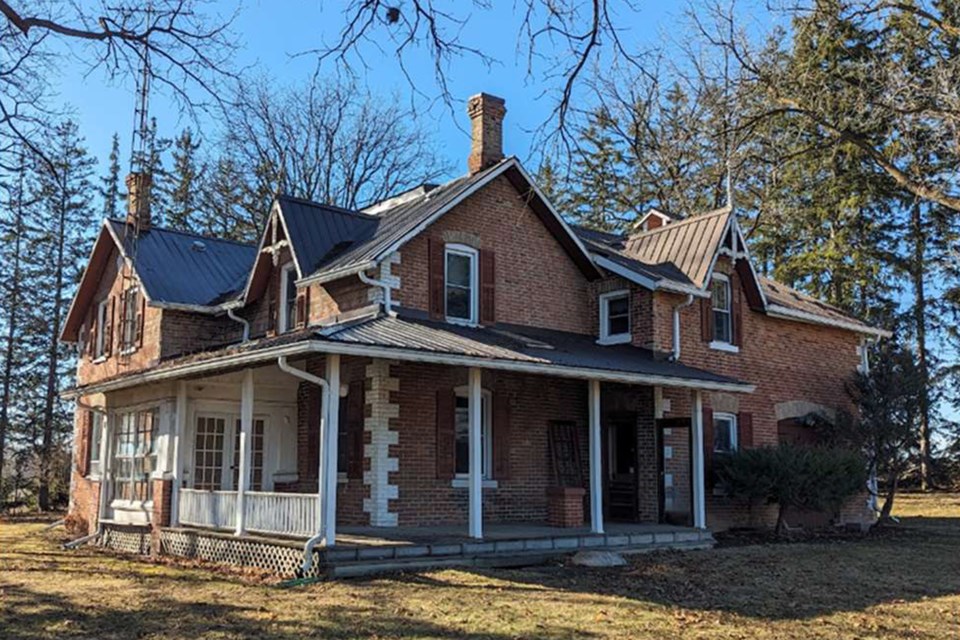Part of Bradford’s heritage is set to be demolished, but some elements could live on at the Auld Kirk.
During their May 23 meeting, the town’s heritage committee recommended approving the demolition of the barn and farmhouse at 1934 Sideroad 5, and council approved the recommendation without discussion during its regular meeting on June 4.
That follows council’s decision from December to support a request from Sarjeant Co. for a Ministerial Zoning Order (MZO) to rezone the property, as Sarjeant only has until July 9 to relocate the company’s concrete batching plant, which has been located at 3111 Sideroad 10 since 2004, but was expropriated in 2022 by the Ontario Ministry of Transportation (MTO) as part of the Bradford Bypass highway project.
Prior to the council meeting, Mayor James Leduc confirmed the town is still waiting for a decision on the MZO from Ontario’s Ministry of Municipal Affairs and Housing. But in the meantime, a report to the heritage committee from MHBC Planning Urban Design and Landscape Architecture provided details about the buildings now set for demolition.
While the age of the two-storey farmhouse isn’t specified, the report notes heritage attributes include: original red brick, exterior and buff brick accents, original openings, two original chimneys, the slope and pitch of the roof, Gothic revival woodwork elements at gables, and a remnant belfry at the north gable.
Heritage features of the barn and surrounding landscape reportedly date from the 1880s and include: a fieldstone foundation, interior timber frame construction, original openings, sliding rail doors on the west, mature pine tree rows, mature pine and deciduous tree plantings, as well as the remnants of a split rail fence bordering Sideroad 5.
Unfortunately, an assessment conducted by ZC Engineering on March 20 found structural issues with both buildings.
They determined the farmhouse is “uninhabitable” due to “significant structural issues” including water infiltration issues, roof leaks and a rubble stone foundation that would need to be “completely reconstructed with a new concrete foundation,” — a task which would see “significant challenges” due to the condition of the above-ground framing and exterior perimeter walls.
When it comes to the barn, the engineers determined the “overall stability of the structure is compromised,” due in part to weather damage and broken beams and that “reconstruction to maintain its current appearance is unfeasible.”
Minutes show that Brandon Elliott, president of Sarjeant, attended the heritage committee meeting, not just to support the proposed demolition, but also to advocate for the preservation of the property's heritage and cultural value.
Past councillor Ron Orr was also in attendance and recommended some of the building components be preserved and relocated to the Auld Kirk historic site at 3380 Line 6.
As a result, the committee agreed to recommend the demolition so long as:
- Sarjeant cover the costs of having the buildings and contents photographed and documented
- Sarjeant cover the costs for commemorative plaques and a display memorializing the buildings on the site
- Sarjeant work where possible to salvage bricks, barn wood, interior fixtures, windows or other items of potential historical value
Those salvaged materials are hoped to be used as part of a future building at the Auld Kirk. In September, councillors hinted at the possibility of a new outbuilding, washrooms and parking at the historic site thanks to a land swap with DG Group in which the town will receive one acre of land immediately west of the Auld Kirk site.
